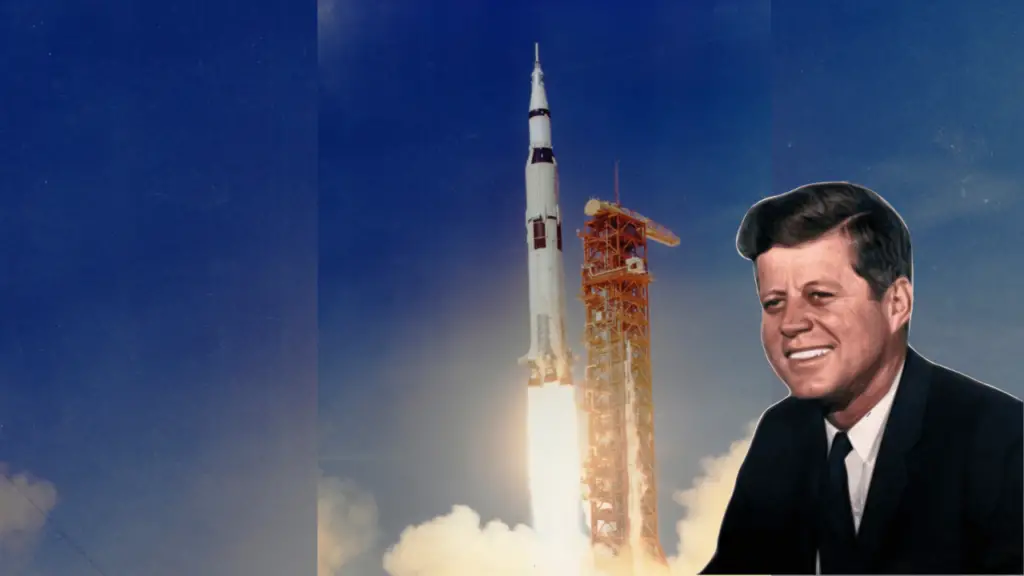On September 12, 1962, President John F. Kennedy stood before a crowd of 35,000 people at Rice University and announced his intentions of sending humans to the moon with these words of inspiration.
“We choose to go to the moon in this decade and do the other things, not because they are easy, but because they are hard.”
These words were so powerful that the American Space Agency worked extra hard to put humanity on the moon in 1969 just as John F. Kennedy has earlier announced. But how did NASA reach a greater milestone with Kennedy’s inspirational words and support? Continue reading to find out.
Why John F. Kennedy Supported Manned Mission to the Moon
After world war 2, the world embraced the era of the cold war. The Soviet Union and the United States were seriously competing for the world powers. The quest to show technological advancement and power over other nations led the Soviet Union and America to look toward exploring outer space.
After the Soviet Union successfully launched the Sputnik 1 spacecraft on October 4, 1957, America was put to test. In response to the Sputnik 1 launch, the American Space Agency launched Explorer 1 on February 1st, 1958. However, launching robotic spacecraft alone into space was just the beginning of the competition between the Soviet Union and the Americans.
When the Soviet Union successfully sent Yuri Alekseyevich Gagarin in 1961, Americans knew that they need to act fast to stay ahead of the competition. In response to the Soviet Union’s manned mission to space, NASA sent Astronaut Allen Shepard 23 days after Gagarin’s made it to space. The world celebrated the milestone attained by humanity. However, competition between the Soviet Union and NASA continued to grow.
Since both nations have successfully put the first human in space, they began to compete for the first nation to reach the moon. President John Kennedy never wanted America to stay behind in the race to reach the moon. So, he began to promote the manned mission to the moon.
On May 25, 1961, President John F. Kennedy presented his plans to send Americans to the moon before the end of the decade before a special joint session of Congress. Within sixteen months of presenting these plans, NASA improved significantly in developing technologies that will bring Kennedy’s ambitions to reality. After his inspirational words on September 12, 1962, at Rice University, everyone knew that the Americans were getting closer to reaching the moon.
How NASA brought President John F. Kennedy’s ambition to a reality
On 22 November 1963, President John F. Kennedy was assassinated in Parkland Health, Dallas, Texas, United States. However, his death did not stop NASA from working toward his great vision of sending humans to the moon before the end of the decade.
The American Space Agency built the Saturn V rocket and completed other space technologies that took humanity to the moon in 1966. Upon completion, the rocket became the most sophisticated rocket ever built in the 20th century.
On July 20th, 1969, NASA Astronauts Neil Armstrong and Edwin “Buzz” Aldrin landed safely on the moon to bring President John F. Kennedy’s vision into a reality. This successful moon landing mission enabled humanity to reach another celestial body that is outside our home planet for the first time. Though President Kennedy was not around to witness the first moon landing mission, his inspiring words contributed a lot to taking humanity to such a milestone.
Conclusion
President John F. Kennedy announced the moon landing mission and NASA worked hard to bring this idea into a reality. As we prepare for the Artemis moon landing mission, we should always remember John Kennedy for his inspiring words that took humanity to the moon and back home to earth. We may likely derive inspiration from the Artemis moon landing mission to send humans to Mars and beyond in the future.





